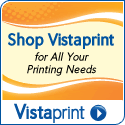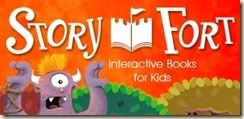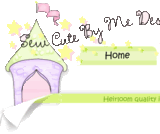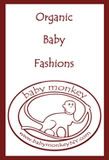**BTW, continuing from yesterday; I found an alternative to the cylinder blocks!! This very smart mom discovered that she could use rollers to mimic the cylinder blocks! Yeah!
Continuing from yesterday's post...
Color Tablets: This helps the child perceive colors, including differences in hues and intensities. It also indirectly helps prepare for visual arts. These are so easy to make, I feel it is really unnecessary to buy them. I especially like this moms homemade color tablets. Simply go to a home improvement store, get some paint chips (2 of each color). I've also heard of using embroidery threat wound around a flat spool. For Box 1, start with 3 matching pairs of red, yellow, and blue. You place the tablets in a random arrangement on a mat. Select one tablet and place it near the front of the mat. Simply match. Say something like "These 2 tablets are the same color." Go through all. Then allow the child to try. Box 2/3 really shouldn't be introduced until period 2, but I feel box two is pretty easy and most will move on from it quickly. Box 2 should be eleven pairs of red, yellow, blue, green, orange, purple, pink, brown, white, grey, and black. Box 3 has 9 sets of 7 tablets each. Each set shows seven different intensities of one hue. For box 3, take one of the sets and put them in random arrangement. Select the darkest of the 7 tablets. Find the next lighter and so on. Continue until all 7 are completed. Then allow the child a chance to try. There are additional exercises using the color tablets that I'll cover in the future. (Note the pic below is not set up correctly).
Presentation tray of the Geometric Cabinet: This tool is to help develop visual/tactile perception. Also preparing for writing, function of the symbols, preparation for math, learning shape names, and etc. Drawer 1 has ellipse, oval, curvilinear triangle, quatrefoil; Drawer 2 has equilateral triangle, right angle isosceles triangle, obtuse angle isosceles triangle, acute angle isosceles triangle, right angle scalene triangle, obtuse angle scalene triangle. Drawer 3 has rhombus, parallelogram, trapezoid, trapezium. Drawer 4 has square and 5 successively narrower rectangles. Drawer 5 has pentagon, hexagon, heptagon, octagon, nonagon, decagon. Drawer 6 has circle and 5 successively smaller circles. There are 3 sets of white Geometric Cabinet cards for every shape in the cabinet. I found a good tutorial for making the cabinet at this site. Basically you need two pieces of yellow craft foam (A4 size), 1 dark blue craft foam (A4 size), 6 brass paper fasteners, PVA glue, and the template links which I'll post below. The Geometric Cabinet Inset Templates are from jmjpublishing here. Here are the other templates: solid, thick outline, and thin outline. Basically you do the following:
Print out the templates for each tray you are making. Just worry about cutting out the shape part. Arrange on a piece of yellow foam that is laying horizontally. Trace around with a pencil. With a sharp small knife cut out the shapes (Keep the cut out shapes for 3 part cards). Take blue foam (horizontal also) and put the yellow cut out section on top. Carefully trace the shapes. Cut out the shapes. Flip the cut out foam and add glue. Glue to the other piece of yellow foam. Let it dry. Now with your fasteners, push through the blue shapes. These are your knobs. This sure does beat $300 doesn't it? Basically, here is how you do the activity-
A stack of form cards are laid upside down, in random order. A card is turned over. The child traces the shape with a finger. The child then walks over to the cabinet. The correct shape is located. The shape is placed on the card. The process is repeated…
Sensitizing the Fingers: This should always be done before working with touch boards.
Basically the fingertips of the writing hand is placed in and soaked into water for a bit. They are dried off with a towel.
Touch Boards/Rough and Smooth Board:Board 1: Simply put a square of cardboard onto some foam or other smooth type material. When showing your child, stroke and say rough or smooth on the appropriate areas. Board 2: Cut strips of 5 different grades of sandpaper. Put them on another sheet of the smooth paper, equal distance apart. Trace all strips with fingers from top to bottom. Invite child to feel the board. Say rough and smooth in the appropriate areas. Geometric Solids: There are 9 shapes: rectangular prism, triangular prism, cube, cone, pyramid, cylinder, sphere, ovoid, and ellipsoid. Some of these shapes can be found on your house to START talking about them but for the actual exercises it is probably best to go ahead and buy a set. Napkin rings can be used for the bases. The first part is just basically feeling the different solids. Next, you might work on naming the different solids. You can have children look for similar in their environment, blindfold and identify by name, use in a mystery bag, categorize (those that have a point, those that roll, and etc.), There are many more activities. Also there are cards that can go with this project. I found some foam geometric solids here for $28.00; I would love the wood, but it just isn't in my budget so this will work great for now. Also here are some natural wood ones for $21 that could be painted blue, napkin rings could be used for stands, and you could download the cards. They cards are also available there for $5.00.























1 comments:
Have you checked out montessorioutlet.com? Their prices are wonderful, and I have ordered from them and been very pleased. Their geometric solids are $39, they are wood and blue. I actually ordered mine from Adena. They were the same price, but included the box and the bases. Unfortunately I wasn't very happy with the quality. Just a suggestion!
Post a Comment